Estimated reading time: 5 minutes
Sunburn on fruit is a very real risk, particularly in the type of long heat waves that are becoming more common due to climate change.
Related Articles
How much fruit will your tree produce?
Working out how much fruit a mature fruit tree can grow will help you plan how many trees you need in your garden to meet your family’s needs.
Taming monster fruit trees with renovation pruning
Learn how to use a technique called renovation pruning to tame large, unpruned, and out-of-control monster fruit trees.
What broke my fruit tree?
Broken fruit trees can be caused by animals eating them, or accidental damage. Identifying the animal is the first step to prevention.
Sunburn is different from the type of burn damage that trees and fruit suffer in an actual fire (which is also becoming more common) but can still do a lot of damage. If you live in a hot climate (like we do) sunburn is an certain part of fruit growing.
Sunburn can also happen in cooler fruit growing areas during heat waves.
What does sunburn look like?
There are three types of sunburn damage you may see on your fruit:
1. Sunburn necrosis

The first type of sunburn, called sunburn necrosis, appears as brown or black patches on the skin of the fruit. The burns may appear in different forms. They can be sunken, as seen in the photo above, or raised and rough in texture.
They are usually located on the side of the fruit that has been exposed to the sun.
2. Sunburn browning
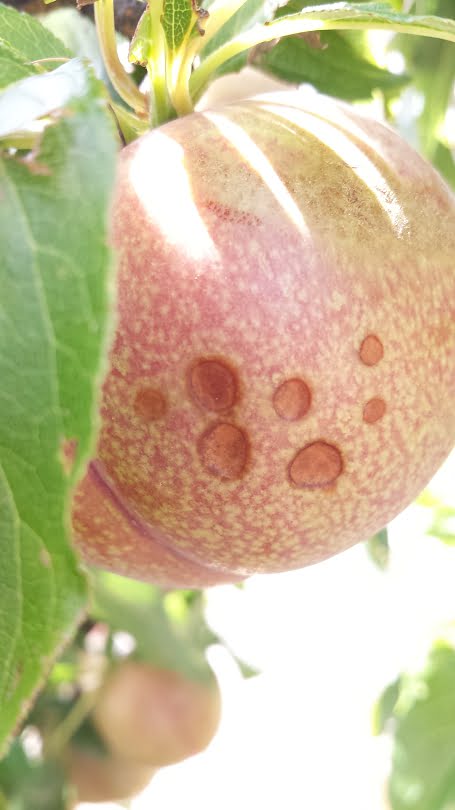
Sunburn browning on fruit appears as brown or yellow spots on the skin of the fruit. It’s caused by damage to the cells in the fruit’s skin from too much heat, and can occur all over the fruit.
3. Photo-oxidative sunburn
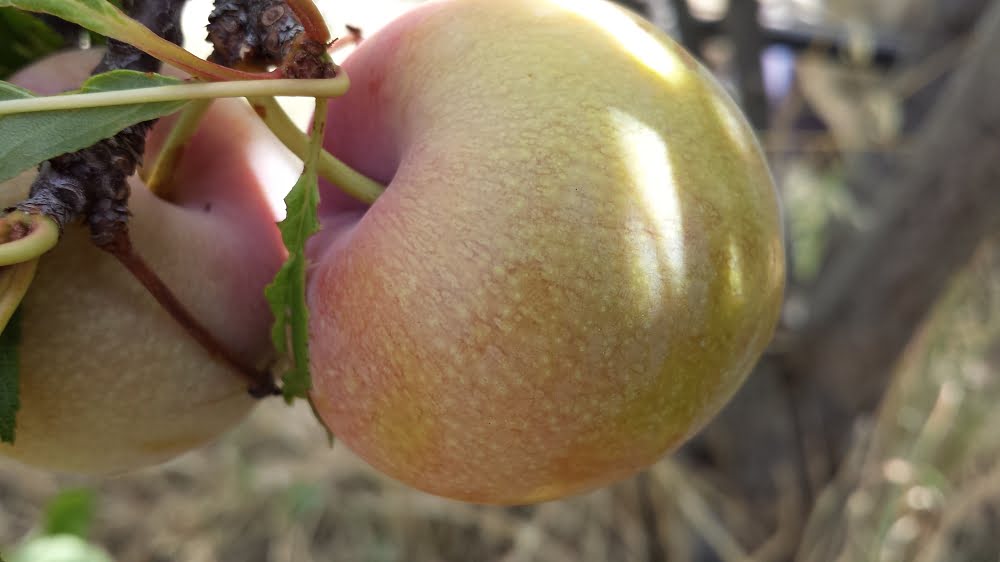
This type of sunburn looks like brown or yellow discoloration of the skin, and can almost appear green at times. These burns occur on the side of the fruit that has been exposed to the sun.
Photo-oxidative sunburn is caused by the build up of reactive oxygen species (ROS) within the fruit’s cells as a result of exposure to UV rays.
It can cause damage to the membrane lipids and proteins within the cells. The flesh under the burn usually feels quite hard and doesn’t ripen properly.
The burn may be uneven or patchy, and the fruit might also look a bit dried up.
How hot does it have to be to cause sunburn on fruit?
This is a difficult question to answer, as it depends on quite a few factors.
As a rough guide, you may expect to see some browning damage at temperatures over 35C, and once the temp climbs over 40C, necrosis also becomes a risk.
A super hot day of 44C hit the Pizzaz plums just before they were ripe enough to pick, causing the damage you can see below.
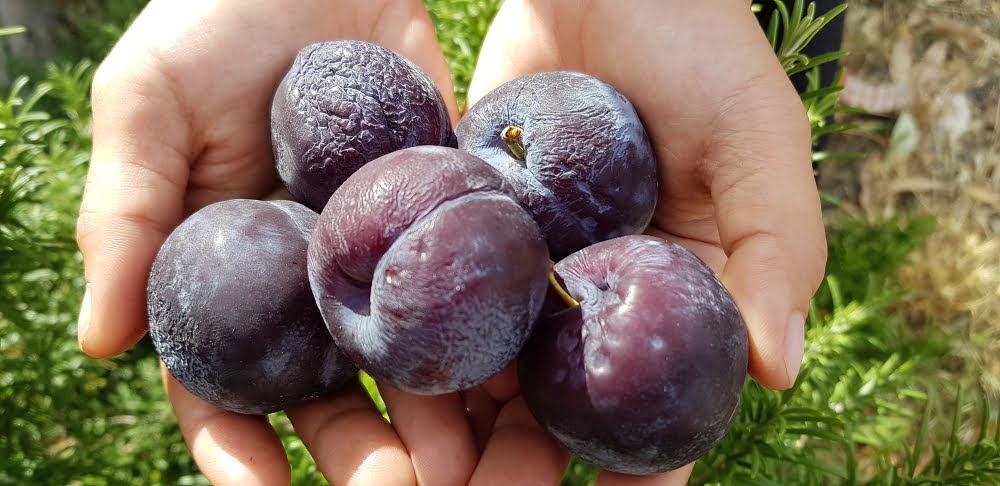
You can see the spots and how the skin has shrivelled – that’s a version of sunburn browning. Most of the plums are still perfectly usable for jam, cooking, or even for eating, but it definitely reduces the quality.
What type of fruit can be burned?
All of them!
Plums are very vulnerable, which is why we’ve used so many photos of plums in this blog. Apples are also very vulnerable, and apple trees are often pruned with this in mind.
The sad truth is that pretty much any fruit (or veggies for that matter) can experience sunburn.
Can you prevent sunburn?
Preventing sunburn can be incredibly difficult in cases like this.
There was probably only a very brief window of a day or two when the plums were ripe enough to pick (with the confidence that they would continue to ripen off the tree) before the heat wave hit.
If you have fruit that’s almost ripe, it’s definitely worth paying careful attention to both your trees and the weather man. You should aim to get the fruit harvested before a predicted heatwave hits.
There’s a number of other things you can do to prevent sunburn damage.
Our top 10 tricks and techniques to prevent sunburn
- Give your trees extra water on extremely hot days
- Encourage good leaf growth
- When fruit thinning aim to provide all fruit with leaf cover
- Avoid bare ground under the tree
- Encourage good air movement through the tree
- Try kaolin clay spray
- Shade netting
- Overhead sprinklers can reduce the risk of sunburn to apples (but may have other consequences)
- Make sure your fruit is not calcium depleted, as this can increase the risk of sunburn
- Don’t leave fruit sitting in the sun after it’s picked
We include more detail on each of these techniques in “What’s that spot?” (even though sunburn is not actually a disease, but a weather impact).
You can’t control the weather, but there’s still a lot you can do.
Related Articles
How much fruit will your tree produce?
Working out how much fruit a mature fruit tree can grow will help you plan how many trees you need in your garden to meet your family’s needs.
Taming monster fruit trees with renovation pruning
Learn how to use a technique called renovation pruning to tame large, unpruned, and out-of-control monster fruit trees.
What broke my fruit tree?
Broken fruit trees can be caused by animals eating them, or accidental damage. Identifying the animal is the first step to prevention.

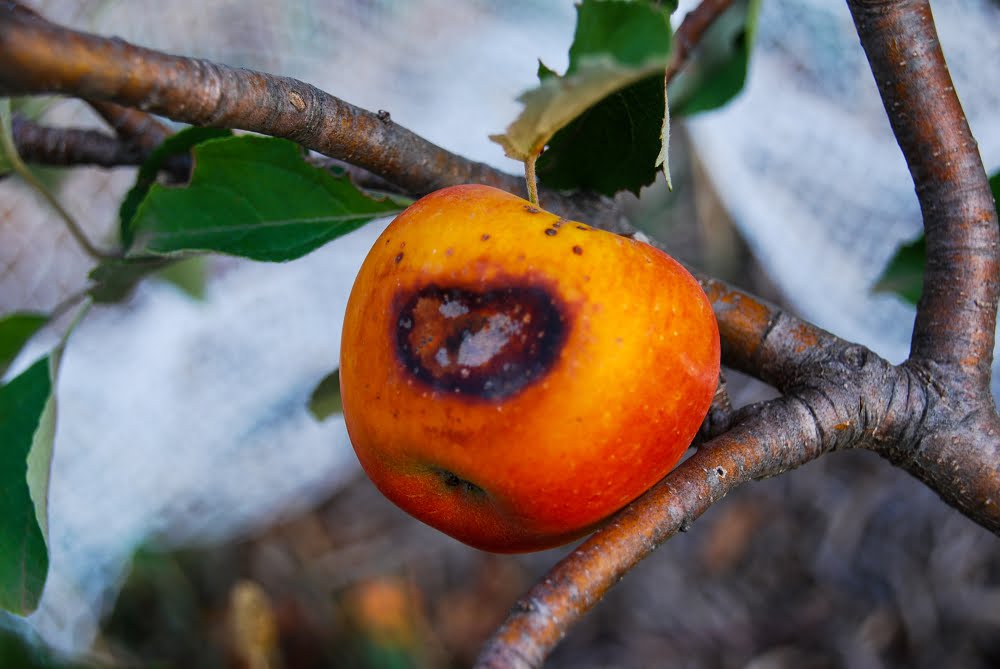
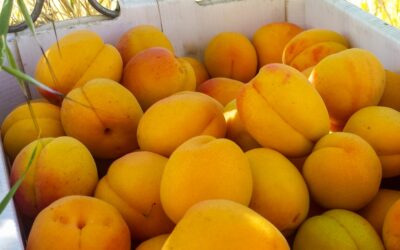
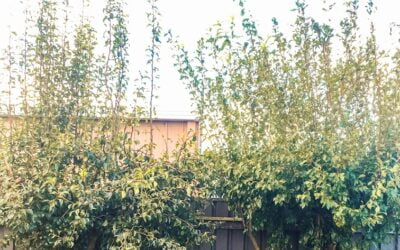



Very true. After weeks of early heat around 40 degrees late last year, accompanied by hot wind, our remaining fruit literally cooked on the trees. I managed to get most peaches off but lost all the nectarines unfortunately!
Well done for at least saving some peaches Marilyn, it’s so disappointing to get fruit almost all the way to the end – and then lose it!
Thank you for the information. You sent a lot of new information so am going to save your email. This is my first fruit tree. 2009(?) Planted a seed from a red apple. Thought it had died. Last year had five flowers and got three green apples. In a 4×4 bed. Thank you again.